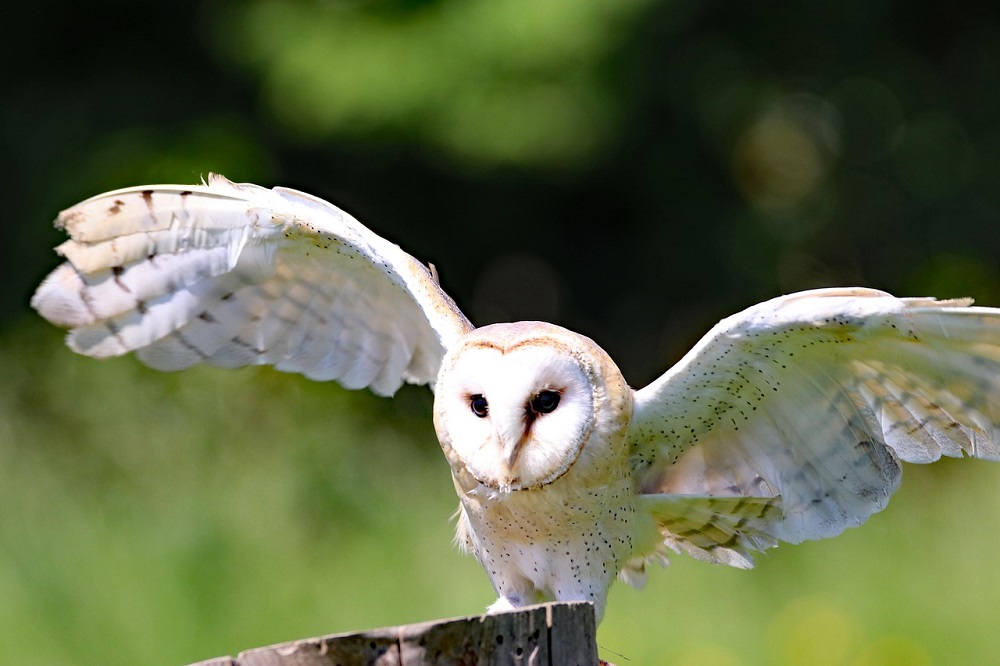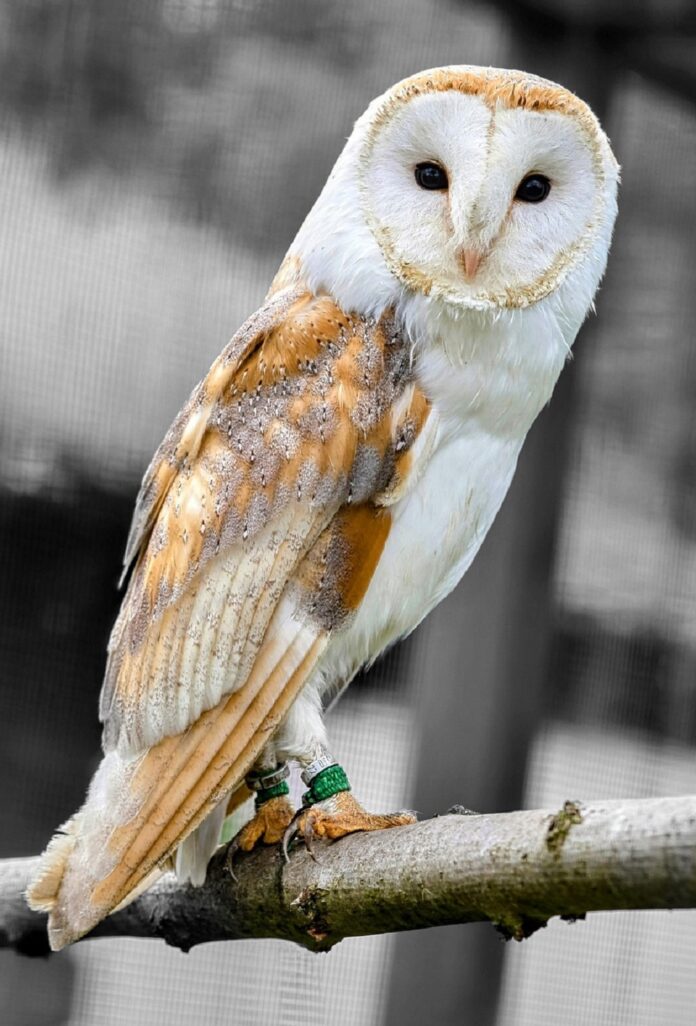Summary: The Barn Owl (Tyto alba) is one of the most widespread owl species globally, easily recognized by its heart-shaped face, white facial disc, and silent flight. Native to diverse habitats—from rural barns to woodland edges Barn Owls primarily hunt at night, feeding on small mammals like rodents. These owls play a crucial role in controlling pest populations. Characterized by excellent low-light vision and near-silent wings, they typically nest in cavities, barns, and tree hollows. With proper conservation and nesting box support, Barn Owl populations can thrive near human settlements.
When night falls and the world quiets down, a ghostly figure glides silently across open fields, searching for prey. This ethereal being is the Barn Owl (Tyto alba), one of nature’s most graceful and mysterious predators. Known for their heart-shaped face, whisper-soft wings, and haunting screeches, Barn Owls have fascinated humans for thousands of years.
The Barn Owl

The Barn Owl is among the most widely distributed birds in the world. With adaptations for almost every continent (except Antarctica), it thrives in diverse environments, from lush grasslands to rugged farmlands. Unlike many owls that prefer deep forests, Barn Owls seek out open spaces to hunt freely.
Basic Profile
Scientific Name: Tyto alba
Order: Strigiformes
Family: Tytonidae
Size: 12–15 inches tall
Wingspan: 31–37 inches
Weight: 400–700 grams
Coloration: Pale white face, chest, and underwings; golden or buff upperparts with gray markings.
The heart-shaped face of the Barn Owl isn’t just beautiful, it’s a key part of their exceptional hearing system, allowing them to locate prey in complete darkness.
Distribution and Habitat
One of the reasons Barn Owls are so successful is their adaptability. They inhabit a wide range of environments across:
North and South America
Europe
Africa
Asia
Australia
Preferred habitats include:
Farmlands
Open fields
Marshlands
Coastal grasslands
Suburban and even some urban areas
Barn Owls need open hunting grounds and safe nesting sites, such as hollow trees, cliffs, barns, and abandoned buildings.
Interesting Regional Variations
In colder regions, Barn Owls tend to be darker (helping them blend into browner landscapes).
In hotter climates, they’re typically paler, almost ghost-white.
Physical Adaptations and Biology
Barn Owls are built perfectly for nocturnal hunting. Their body adaptations are truly astonishing:
Silent Flight
Specialized feathers reduce air turbulence, allowing them to fly almost noiselessly—a deadly advantage when stalking prey.
Exceptional Hearing
The Barn Owl’s facial disc acts like a parabolic reflector, funneling sound toward their asymmetrically placed ears. They can locate a mouse in complete darkness just by hearing it move through the grass.
Vision
Though their hearing is primary, Barn Owls also have excellent low-light vision, allowing them to detect movements even under starlight.
Unique Respiratory System
Barn Owls have an extremely efficient respiratory system, vital for maintaining stamina during long hunting flights.
Diet and Hunting Behavior
Barn Owls are strict carnivores. Their diet mainly consists of small mammals:
Field Mice
Voles
Rats
Shrews
Small birds
Occasionally, amphibians and insects
Hunting Techniques
Hover-Hunting: They may hover briefly over a field before diving onto prey.
Perch and Swoop: They often watch silently from perches before swooping down.
Sound Hunting: Even without seeing prey, they can catch it using sound alone.
One Barn Owl family can consume over 1,000 rodents during a single breeding season a huge service to farmers by controlling pests naturally!
Breeding and Nesting
Barn Owls are monogamous during the breeding season, and some pairs mate for life.
Nesting Details
No traditional “nest” is built; eggs are laid directly on existing debris.
Common sites: barns, silos, old trees, cliffs, nest boxes.
Reproduction
Breeding Season: Spring (earlier in warmer areas)
Clutch Size: 4–7 eggs (sometimes up to 12)
Incubation: 29–34 days
Chick Development: Chicks hatch at intervals, leading to size differences.
Fledgling Age: 50–60 days
Parental investment is heavy: the male primarily hunts while the female guards and feeds the chicks.
Barn Owls vs Other Owls
| Feature | Barn Owl | Typical Forest Owl (e.g., Great Horned Owl) |
|---|---|---|
| Face | Heart-shaped disc | Rounded |
| Call | Screech | Hoot |
| Preferred Habitat | Open fields | Dense forests |
| Flight | Almost silent | Quiet but less silent |
| Primary Hunting Method | Hearing | Vision & hearing |
Barn Owls are part of the Tytonidae family, while most other owls belong to the Strigidae family.
FAQs About Barn Owls
Are Barn Owls really silent when they fly?
Yes! Their special wing structure muffles sound, making them virtually silent predators.
What do Barn Owls symbolize spiritually?
They often symbolize wisdom, mystery, change, and intuition.
Can you keep a Barn Owl as a pet?
In most places, keeping Barn Owls without a special wildlife permit is illegal. They are wild animals, not pets.
How long do Barn Owls live?
In the wild, 4–10 years. In captivity, they can live up to 20 years.
Do Barn Owls migrate?
Most populations are sedentary, but some in extreme climates may move seasonally to avoid harsh weather.
Why Barn Owls Matter
The Barn Owl is not just another pretty bird. It’s an essential predator that helps control agricultural pests naturally. It’s a cultural symbol of both wisdom and mystery. And it’s a biological marvel, built for perfect stealth hunting.
The Marvelous Snowy Owl: A Journey into the World of These Majestic Birds
Frequently Asked Questions
What do barn owls eat?
Barn Owls mainly feed on small mammals such as mice, voles, and rats, making them effective natural pest controllers.
Where do barn owls live?
Barn Owls are found worldwide in open countryside, farmlands, woodland edges, and often roost and nest in barns or tree hollows.
What does a barn owl look like?
They have a distinctive heart-shaped white face, pale underparts, and golden-brown and gray upperparts.
Are barn owls nocturnal?
Yes, Barn Owls are primarily nocturnal and hunt mainly at night using their exceptional hearing and night vision.
How do barn owls hunt?
They silently fly low over fields and use their facial discs to focus sound and detect rodents beneath vegetation.
Do barn owls mate for life?
Barn Owl pairs often remain together for several breeding seasons, but long-term lifelong bonds are not guaranteed.
How long do barn owls live?
In the wild, Barn Owls typically live 4–5 years, but some individuals have survived more than 10 years.
Can barn owls live near humans?
Yes, they often nest in barns, hollow trees, and nest boxes near homes and farms.
Do barn owls migrate?
Some Barn Owl populations are resident year-round, while others show partial migration depending on food availability.
Why are barn owls declining in some areas?
Declines are often due to loss of nesting sites, rodenticide use, and reduction in prey abundance.

